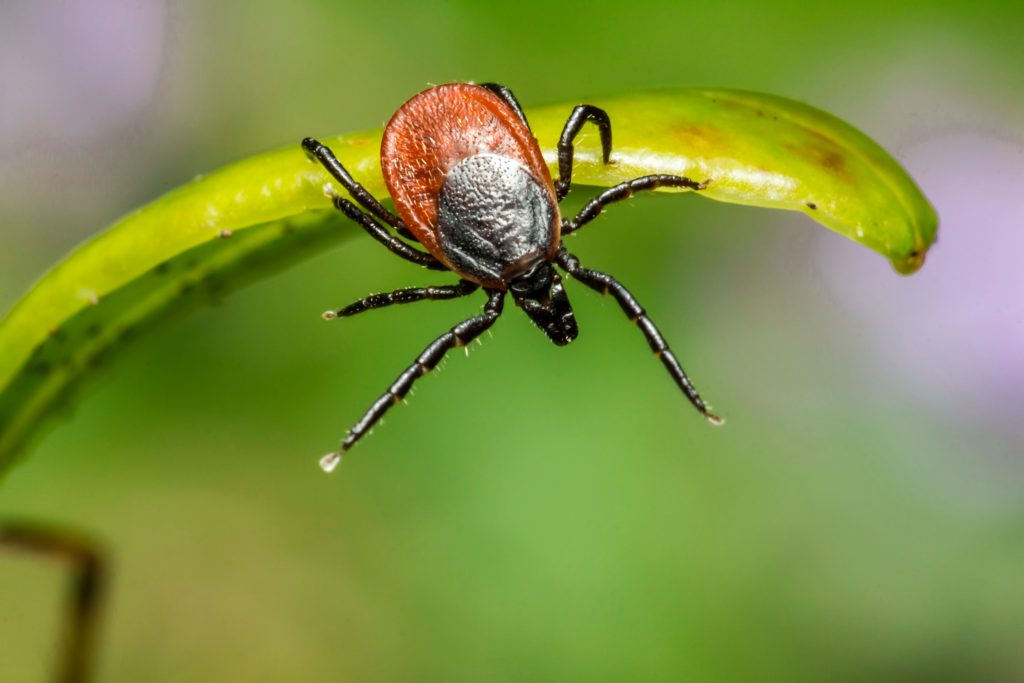Help Fight the Bite in Michigan!
As any UP Michigan resident knows, ticks and mosquitoes are quite the nuisance. But more than just an annoyance, they can also spread many illnesses to people. Preventing bites from ticks and mosquitoes is the key step in avoiding these illnesses.
Ticks
The two types of ticks that most commonly bite people or pets in Michigan are the deer (black-legged) tick and the wood (dog) tick. A third type of tick that can bite people or pets in Michigan the lone-star tick, is less common. Bites from all three of these ticks(link is external) can make you sick. In Michigan ticks can spread anaplasmosis, babesiosis, Borrelia miyamotoi(link is external), ehrlichiosis, Lyme disease, Powassan virus, Rocky Mountain spotted fever, and tularemia. Illnesses spread by ticks can be prevented if you take the proper steps.
Mosquitoes
Not all of the 50+ species of mosquitoes in Michigan bite humans, but many of those that do can spread diseases. In Wisconsin, mosquitoes can spread Eastern equine encephalitis, Jamestown Canyon virus, La Crosse encephalitis, St. Louis encephalitis, and West Nile virus. There are also illnesses that you can get from mosquitoes when you travel outside of the United States. Some of these diseases are chikungunya, dengue, Japanese encephalitis(link is external), yellow fever, and Zika virus. Illnesses spread by mosquitoes can be prevented if you take the proper steps.

Ticks 101:
- Basics. Ticks are arachnids, related to spiders, mites, and scorpions. In Wisconsin, there are three types of ticks that spread disease: the deer (black-legged) tick, the wood (dog) tick, and the lone star tick. The deer tick spreads the most illnesses in Wisconsin. Most people get sick from a tick bite in the spring, summer, or early fall, when ticks are most active and people are outdoors.
- Life Cycle. There are four different phases in a tick life cycle. This cycle includes egg, larva, nymph, and adult stages. During this life cycle, which can last up to three years, the tick will have three blood meals and usually feeds on small mammals, birds, and deer. Ticks feed by biting into the skin of a host and, while they are attached, illnesses can be spread. Once a tick is attached to a host, it will feed for 3–5 days. Usually only nymphs and adult female ticks are able to spread illnesses.
- Habitat. Ticks live in wooded areas and areas with high grass. Ticks do not jump or fly and usually stay close to the ground to find a host. They crawl onto animals or people as they brush against leaves or grass and then will attach to the host for a blood meal. A warmer and wetter climate can increase the risk of getting an illness from a tick. In Wisconsin, this has created favorable conditions for ticks to survive in more areas of the state, and made the active tick season longer.
- Prevention. The best way to avoid getting sick from a tick is to prevent bites in the first place. There are many ways to prevent tick bites, including doing daily tick checks, wearing insect repellent, and wearing appropriate clothes when you are outdoors.

Mosquitoes 101:
- Basics. Mosquitoes are a type of fly. In Michigan, there are many types of mosquitoes, but only some types can spread illnesses. Most people who get sick from a mosquito bite will become ill in the summer and early fall. This is when mosquitoes are most active and people are outdoors.
- Life Cycle. Mosquitoes have a life cycle that includes four different stages: egg, larva, pupa, and adult. Female mosquitoes lay their eggs on or near water, and the eggs hatch after coming into contact with the water. After hatching, the larvae will feed until they have enough energy to change into pupae. The pupae then grow into adult mosquitoes, the only flying stage. Only adult female mosquitoes bite humans and other animals to get blood meals, after which they lay their eggs on or near water, starting the cycle again. The life cycle of a mosquito usually takes two weeks. However, it can range from four days to one month.
- Habitat. Mosquitoes live in areas with slow-moving or stagnant water, as well as forests, marshes, and tall grasses. Mosquitoes fly and land on animals or humans to bite the host’s skin and consume blood. Warmer and wetter climates can increase the risk of getting an illness from a mosquito. In Wisconsin, climate change has created favorable conditions for mosquitoes to survive in more areas of the state, has made the mosquito season longer, and allows infected mosquitoes to spread diseases faster.
In general, mosquitoes can be divided into two different types based on the habitats where they lay their eggs: standing water mosquitoes and floodwater mosquitoes. Most mosquito eggs need small amounts of water to hatch and develop into adult mosquitoes. For more information on the mosquito life cycle, and how to prevent mosquitoes around your home, please visit the Environmental Protection Agency (EPA) website.(link is external) - Prevention. The best way to avoid getting sick from a mosquito is to prevent bites in the first place. There are many ways to prevent mosquito bites, including wearing insect repellent and wearing appropriate clothes when you are outdoors.